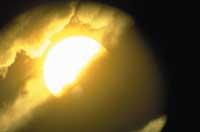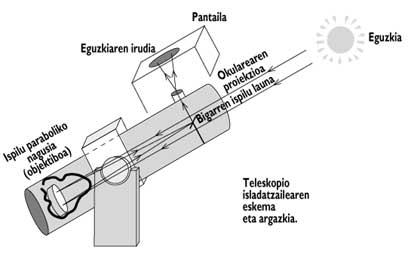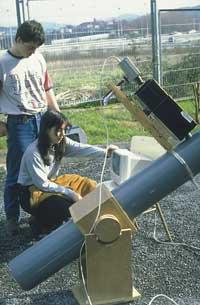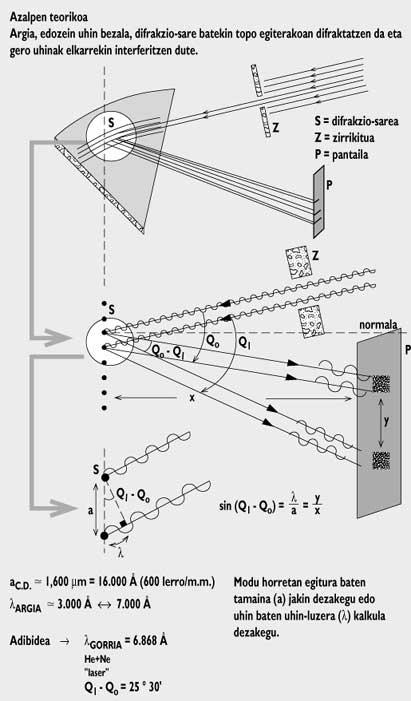Fundamentals of Practical Astrophysics
Following the same reasoning, Position Astronomy is a field that studies the relative position, displacement, orbit, and velocity of the stars as light structures.

All of them begin by observing the stars. The human beings of Previous History only perceived points of light in the sky (the moon and the sun were the only exceptions, but in these cases they were also considered luminous discs). Thus, position astronomy was the first to be developed and on it the first research on the measurements of the universe was based: size of the Earth, of the Moon, distance from the Earth to the Moon, distance to Mars, distance to the Sun and its size, etc. The period of rotation and the different velocities of these stars also began to be known.
To be able to do all this, it was enough to measure at a given time different positions and changes of position along the constellations. For this purpose, they directed their quadrants, astrolabes and astronomical ballestas towards the brightest point. The calculations thus made were purely mathematical and geometric, since position and time were the only parameters. Outside of that there was no certainty and swimming was the only way: Why so close or so far? Why that speed? What matters are? Where do light, color and energy come from? Is there life?
The Arrival of the Revolution

XVII. In the eighteenth century the telescope was used. In the eighteenth century the discovery of the light spectrum occurred. These two facts are the reflection of the spectacular development of science, since in physics, chemistry and mathematics, such as differential calculations, giving an alternative to geometry, occurred in the midst of the flourishing that occurred at that time. For all this, astronomy achieved a great advance and it was possible to give scientific answer to the questions raised in the classical era. For this, the concept of stars had to be changed.
From supposing pure points of light, it became recognized as objects of three-dimensional internal structure. To carry out the research, the stars had to be studied as close as possible (using the telescope), and being the only objective information transmitted by these objects its light, it was necessary to perform a detailed analysis of it, decomposing the light and proceeding to perform precise measurements (spectrum). There is the duty of astrophysics.
Observing the sunspots
The Sun is the closest star to us and therefore the brightest star in our eyes. In any case, the Sun is a current star and the results that can be obtained from your study can also be used to know the rest of stars.
The universe is structured in galaxies and in each of them is considered a system of stars of one billion. Therefore, when analyzing the Sun, star of our system, the structure of the universe (cosmology), its origin and its future (cosmogony) will also be our studies.

The development of astrophysics started from the research of the Sun. Being the closest star to us, we have a lot of information about the Sun. However, there are many questions that remain to be answered (production of neutrinos, “sunny”, influence of spots on Earth, changes of radiation, etc. ), so it can be claimed that this gigantic ball of fire is still mysterious.
We start from the observation of the spots that occur, develop and disappear in the photosphere of the Sun. The nature of these spots is known: They are zones of the order of 4,000 K and as in the photosphere of the Sun there is an approximate temperature of 6,000 K, they are presented before our eyes as “colder” or as black.
In astrophysics, there is a direct relationship between the variations of the magnetic field of the Sun and the spots. In fact, we might think that the Sun is a gigantic dynamo and that when the matter is ionized and degenerated at high pressures, densities and temperatures, due to the revolving movement of the Sun, these charges create a magnetic field.

However, the spots are born, evolve and disappear. They present different structures and give us a clear demonstration that our star rotates through the solar disk. What's more, although each day is very variable, the number of spots defines a specific period of time and is believed to have a notable influence on the episodes of heat and cold on Earth.
For observation, with good telescopes or binoculars, we will project the image of the Sun on a paper. Never look directly from the eyepiece because we would burn our eye! ... We will use a CCD or video camera, but in this step it is also necessary to take protection measures: to prevent pixels from being damaged, we will perform an incorrect recording or projection or we will place a filter in front. These images will be saved, as they will then help us to carry out numerous studies in the magnetoscope.

Renewing the solar spectrum

Although it can be thought otherwise, the information we can obtain from the visible light is much more accurate than the one we can obtain from the spots of the photosphere of the Sun. If we manage to decompose that “white” light, we will discover that our star is formed by zones of high pressure and temperature that we do not see and that has a visible photosphere, that is, a cold atmosphere and almost empty.
The first is a compact area that provides a continuous spectrum, such as the incandescent light thread of a bulb. The second is the cold, gaseous photosphere, which filters some linear colors of certain spectrum energies that we do not see in itself, lines not sensitive to its chemical composition. In addition, the vivid colors emitted in the continuous spectrum provide direct information about the temperature of the photosphere.
Among the data we can extract from the study of the spectrum in fast boat are the structure of the stars (zone and atmosphere), the temperature of the photosphere (about 6,000 K) and its chemical composition (among others, the cold components that absorb energy: Ca, Fe, H, Mg, He, Na, etc. ).

If we then want to measure, we must observe the spectrum and for this purpose, spectroscopes are used. The model that we present below is the one designed in Euskal Herria, cheap and of great quality. For its creation it is necessary to cut the eighth part of a compact disc (CD) and, as indicated in the image, put it in a large box of poxpolo painted black, add it and we will open a small box office in the lid located on it. The last step is to open a small slot, since the last one is to direct it towards the Sun.
The CD differs photons of different wavelengths and energies with white light, that is, it triggers them in all directions; then the waves of the same color are interfered with each other (constructively and destructively), showing discontinuously an intense color in certain directions. At the same time, the rest of colors follow the same path, and continuous spectra appear discontinuously.
The first signal that does not deviate is the white and the most vivid; after a destructive interference, the first spectrum arrives and discontinuously the rest, increasingly weak and separated. Those that will not appear are photons absorbed by the chemical components of the photosphere.







